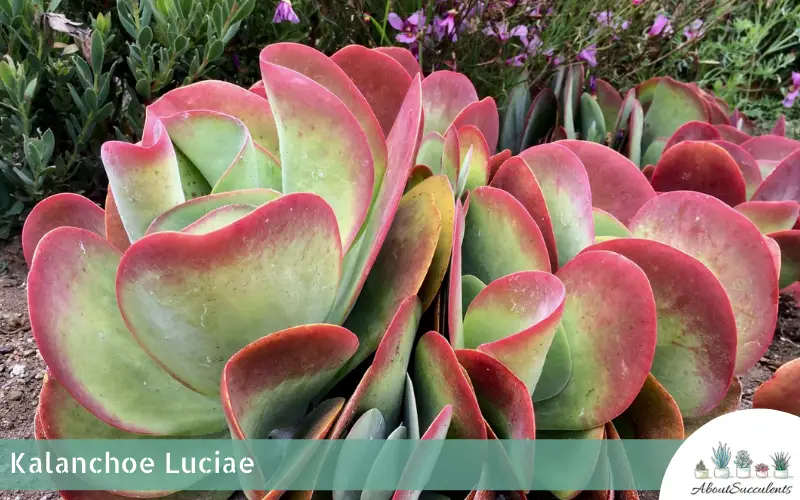
Kalanchoe luciae is an alluring succulent that is given the alias “Flapjacks” or “Paddle Plant” because of its flat, fleshy, and smooth leaves. Flapjack’s leaves have a greyish-cream color that has reddish margins but develops a bright, beautiful red color when given proper sunlight exposure.
Kalanchoe luciae is typical of the genus Kalanchoe in that it forms a rosette that sends up thick inflorescences that are coated with white powder and measure 1 to 1.3m or 100 to 130cm tall. As the leaves rise toward the flowering stem, they become smaller.
Flapjack itself can reach a height of 24-inches (61cm) and 36-inches (91cm) in width.
Kalanchoe luciae comes from the Crassulaceae family and is native to South Africa.
General Information:
Also known as: Flapjacks, Paddle Plant
Plant Family: Crassulaceae
Origin: South Africa
Height: 24-inches (61cm)
Exposure: Partial to full sunlight; 4 to 6 hours per day.
Water Needs: Water only when soil is dry to the touch, little watering during the winter months.
Soil Type: Cactus mixed with equal parts of loam and sand, plus lava or pumice to improve the level of drainage
Soil pH: Slightly acidic (6.1 to 6.5 pH)
Tolerance: Drought
How to Grow and Care for Kalanchoe Luciae
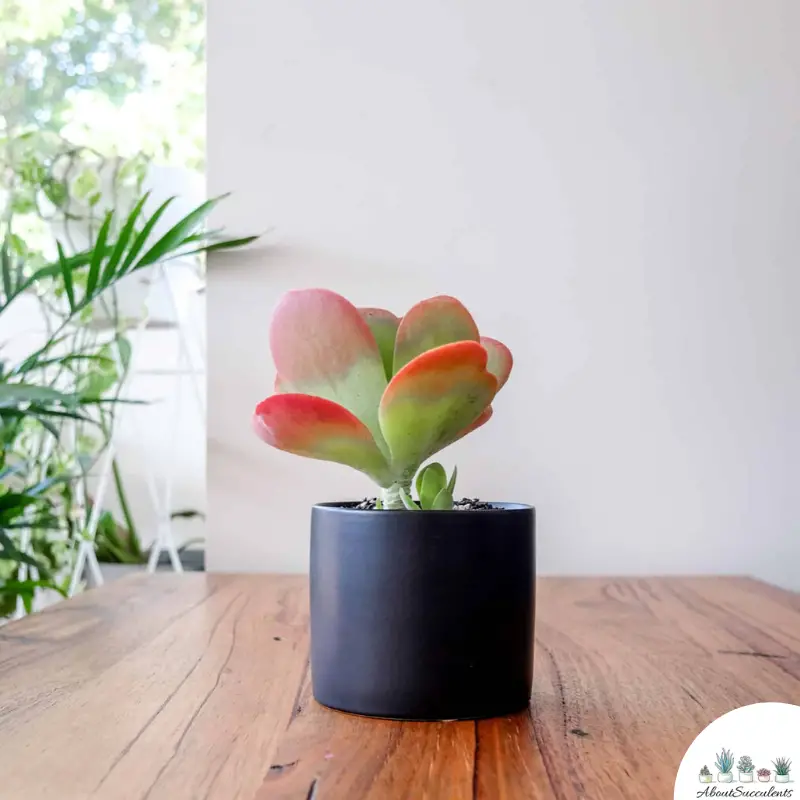
Kalanchoe luciae is popularly used as beautiful additions to a rock garden, as an adornment on a rock embankment, and as a container plant. Flapjack’s reddish-colors make it at an attractive display especially when you have many of them arranged in a succulent garden.
Flapjacks is not cold-hardy. If live in an area that experiences a drop in temperature below 20° F (-6.7° C), it would be best to grow Flapjacks indoors.
1. Sunlight
Kalanchoe luciae can be grown outdoors and indoors. It is preferred that Flapjacks be grown in an outdoor garden so it can receive regular exposure to the sun and develop its eye-catching colors.
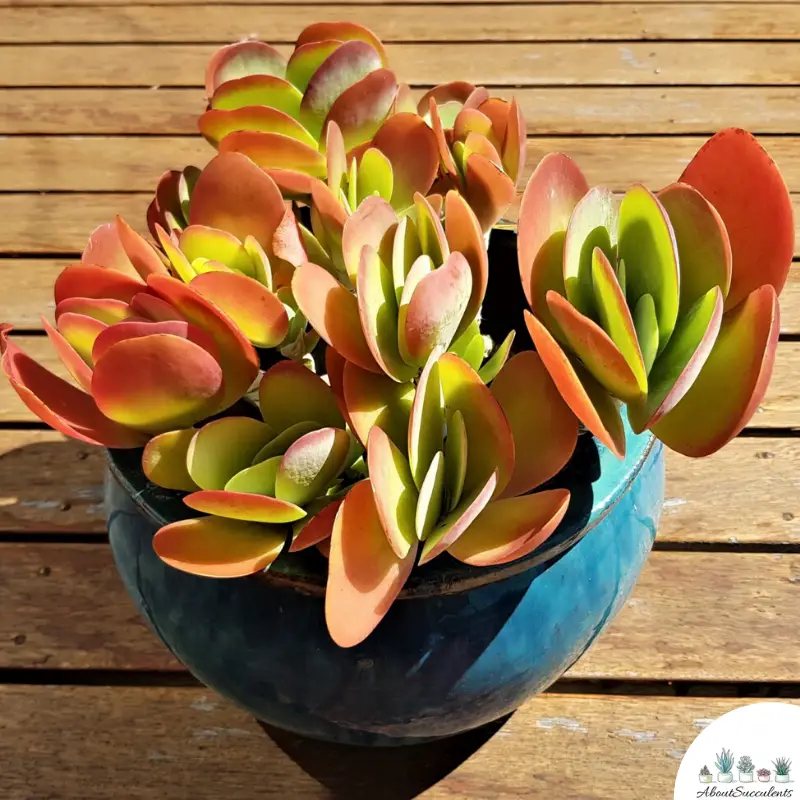
If planted outdoors, place Kalanchoe luciae in a location that gets 6 hours of morning sunlight every day. Avoid exposing the succulent to the afternoon rays as the leaves can get scorched and sunburned.
Are you planning on growing Kalanchoe luciae indoors? Place Flapjacks near a window that gets 4 to 6 hours of partial to full sun every day. If this is not possible, put the succulent under a Grow Light.
2. Watering
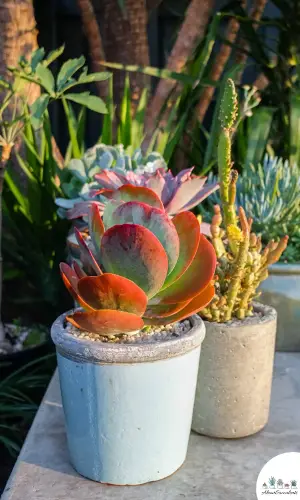
Kalanchoe luciae will require more water in the summertime and only needs moderate watering in the spring and autumn. During winter, the soil will remain moist longer and Kalanchoe should not be watered frequently.
The best way to know if Flapjacks needs water is to check its soil. If the soil is dry to the touch, it’s time to water the plant.
You can also insert a stick into the soil. If the stick comes out dry, give Flapjacks water. Always water the soil and not the leaves.
3. Pot and Soil
The best choice of pot for Kalanchoe luciae is one that is made of clay and free of the glazing process. It should also have a drainage hole. Clay is a porous-type of material that makes it easier for the soil to dry out.
Kalanchoe luciae grows better in fast-draining and well-aerated soil mix. You can use cactus soil and add equal parts of loam and sand, plus lava or pumice to improve the level of drainage.
How to Propagate Kalanchoe Luciae
If you want to increase the number of Kalanchoe luciae in your succulent garden, there are 3 methods you can use for propagation: Leaves, cuttings, and offsets.
Method 1 – Leaves
Step 1: Perform a clean pull by gently twisting a healthy leaf from the stem. A clean pull means no part of the leaf is left on the stem. This will improve the chances of a successful propagation
Step 2: Place the leaf in a clean, dry, and shaded area for a few days or until it develops calluses.
Step 3: Once the leaf has callused, place it on well-draining soil.
Method 2 – Cuttings
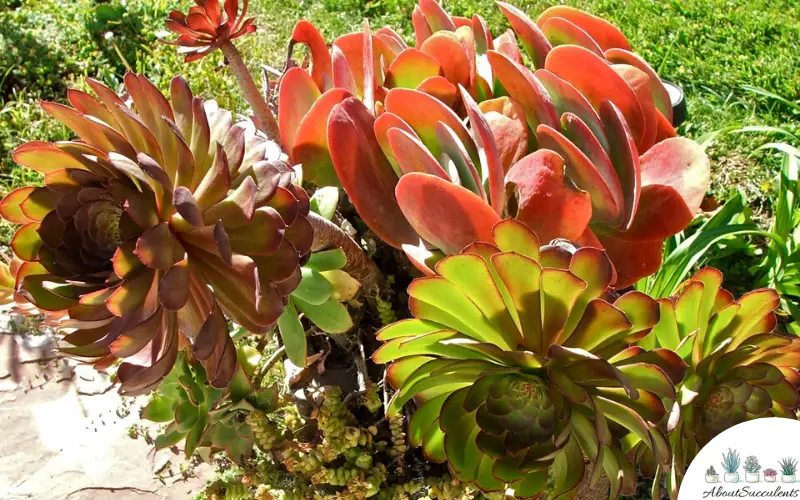
Step 1: Use a sterilized and sharpened knife or garden shears to cut a part of the stem from the main plant.
Step 2: Allow the cuttings to develop calluses over a few days by leaving them in a dry, shaded area.
Step 3: Place the cuttings on well-draining soil once they have hardened.
Method 3 – Offsets
Step 1: Use a sharpened and sterilized pair of garden shears to cut the offsets from the main stem.
Step 2: Place the offsets in a dry and shaded area. Leave them there for a few days until they have grown calluses.
Step 3: Place the hardened offsets on top of well-draining soil.
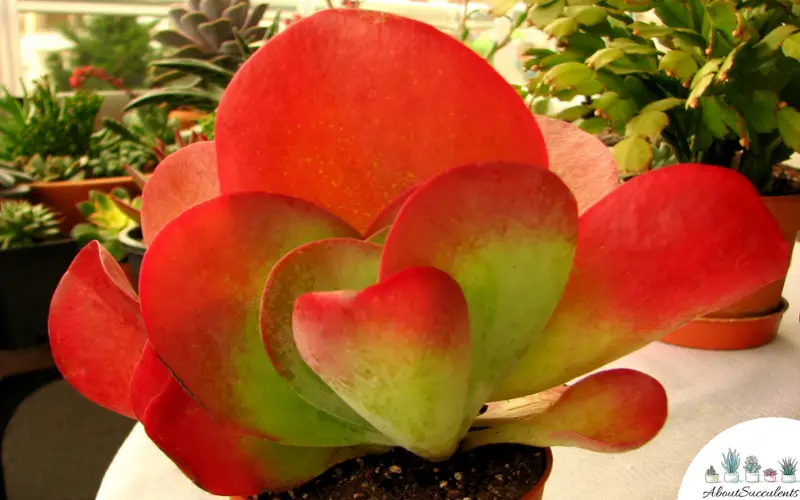
Frequently Asked Questions
Is Kalanchoe Luciae Toxic for Cats and Dogs?
Kalanchoe luciae is not mentioned specifically in the list of plants that are toxic to cats and dogs that appear on the website of the American Society for the Prevention of Cruelty to Animals (ASPCA).
The list does not cover all the plants that could be toxic to cats and dogs. The genus Kalanchoe is also known to have many variants that are toxic to animals.
If your pet ingests a part of Flapjacks and starts vomiting or showing signs of gastrointestinal distress, make a trip to the veterinarian right away.
Why is my Kalanchoe Luciae Succulent Dying?
Overwatering is the most common cause of Kalanchoe luciae’s death. If the roots are submerged in water for prolonged periods, they could rot and develop an infection. Once infection sets in, it can spread throughout the plant and eventually kill it.
If the leaves of Flapjacks are turning yellow or brownish in color, this is a sign that root rotting is taking place. Cut off the infected parts of the plant with a sterilized and sharpened knife or scissors.
Gently uproot Kalanchoe luciae and shake off the excess soil so you can find the roots that are rotting. Cut off these rotting roots with the sterilized pair of shears and allow the plant to dry out before replanting it in fresh, well-draining soil.
Does Kalanchoe Luciae Produce Flowers?
Kalanchoe luciae produces small, tubular flowers at the end of the summer growing season and heading to midwinter. The flowers are 15mm or 0.59-inches long and emit a sweet scent.
As a monocarpic, Flapjack will slowly die once the flowering period begins. Fortunately, this succulent produces offsets or pups that can be used to propagate the species easily.
Last Updated on June 10, 2022 by Sofia Lara